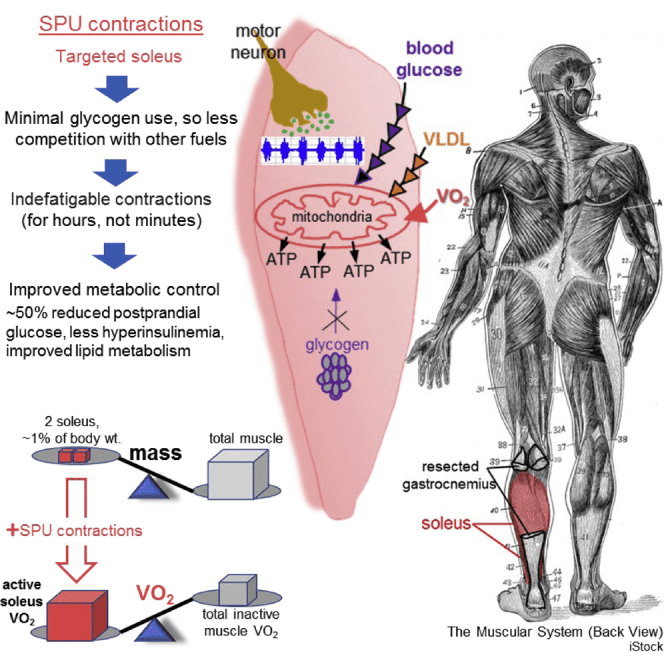Desk work can have a devastating impact on our health, encouraging people to sit for hours in a way that puts humans at greater risk of serious disease. However, new research has found that a small movement of the lower legs can mitigate some of the negative effects of sitting still by keeping one muscle’s metabolism up and running for hours.
The soleus muscle is the large muscle on the back of your lower leg which sits underneath the gastrocnemius. It’s a powerful muscle that we’ve long known is crucial for walking, running, and jumping. Now, scientists have revealed how you can unlock its metabolic potential by doing something they’ve coined the “soleus pushup”.
“We never dreamed that this muscle has this type of capacity. It’s been inside our bodies all along, but no one ever investigated how to use it to optimize our health, until now,” said Marc Hamilton, professor of Health and Human Performance at the University of Houston, in a statement. “When activated correctly, the soleus muscle can raise local oxidative metabolism to high levels for hours, not just minutes, and does so by using a different fuel mixture.”
The experimental physiological study looked at 25 participants whose lifestyles ranged from sedentary to active. They then got them to perform soleus pushups from a comfortable seated position, using monitors and biopsies of the muscle to interpret the results.
Blood chemistry revealed that soleus pushups led to a 52 percent improvement in stabilizing blood glucose fluctuations, and reduced insulin requirement by 60 percent when participants were given glucose drinks.
It could also burn fats in the blood – namely very-low-density lipoprotein (VLDL) which contributes to high cholesterol – by boosting the soleus muscles’ metabolism in a way that kept it ticking over for hours. The effect meant fat metabolism was doubled compared to normal rates without doing soleus pushups.
Part of the soleus pushup’s magic is likely tied to the way this muscle keeps itself energized. Rather than breaking down glycogen like other muscles in the body, the soleus uses blood glucose and fats so it can keep ticking over while we walk and run without tiring.
“The soleus’ lower-than-normal reliance on glycogen helps it work for hours effortlessly without fatiguing during this type of muscle activity, because there is a definite limit to muscular endurance caused by glycogen depletion,” Hamilton added. “As far as we know, this is the first concerted effort to develop a specialized type of contractile activity centered around optimizing human metabolic processes.”

However, the solution – as always – isn’t perfect just yet, as while it appears the soleus has big potential to influence our metabolic health, getting the movement down isn’t so easy freestyle.
“The soleus pushup looks simple from the outside, but sometimes what we see with our naked eye isn’t the whole story,” explained Hamilton. “It’s a very specific movement that right now requires wearable technology and experience to optimize the health benefits.”
The team behind the discovery is now working on perfecting instructions so desk workers can pull off the soleus pushup solo without the need for the sophisticated lab tech. However, it represents a promising future alternative to standing desks and under-desk treadmills for long-term sitters who want to improve their health but don’t have access to these expensive bits of kit.
This study was published in iScience.
[H/T: Slash Gear]
Source Link: Doing This Small Movement While Sat At Your Desk Can Boost Your Metabolism And Burn Fat